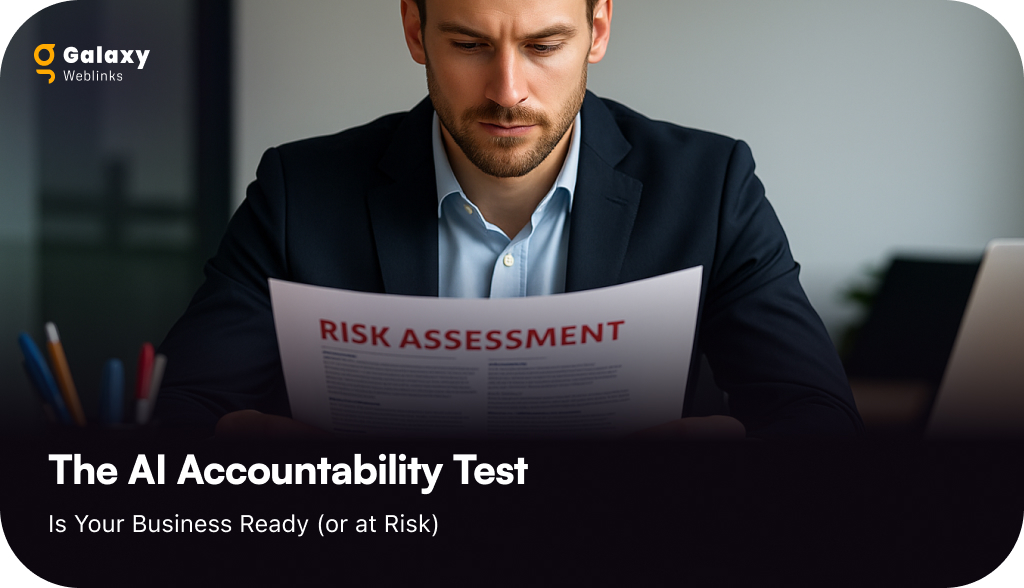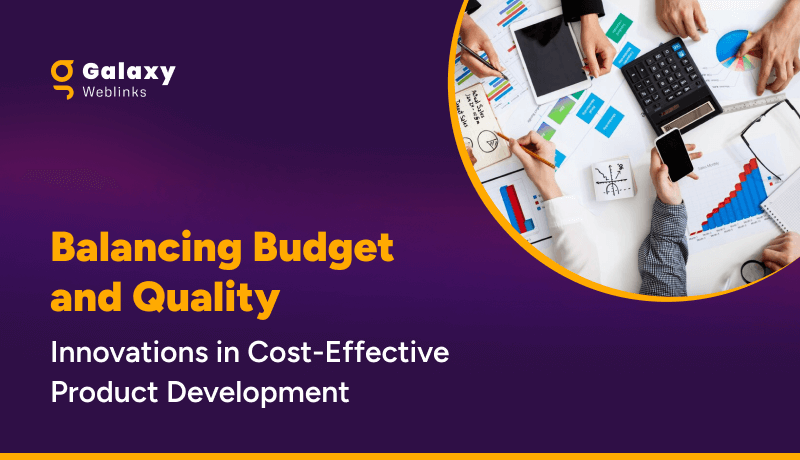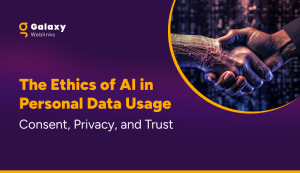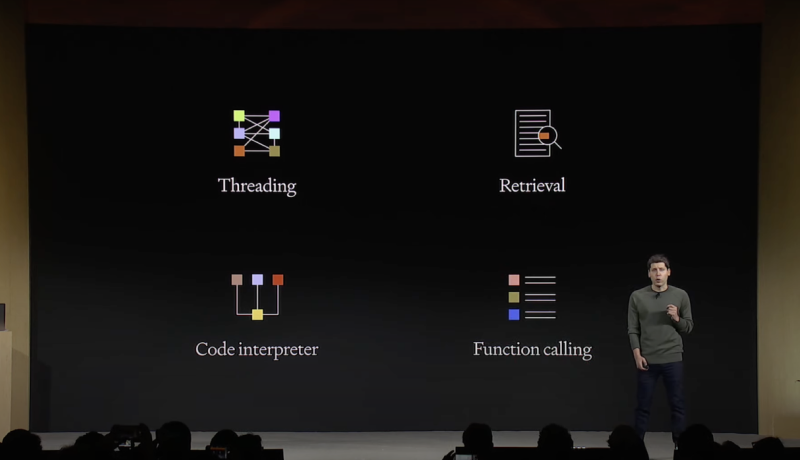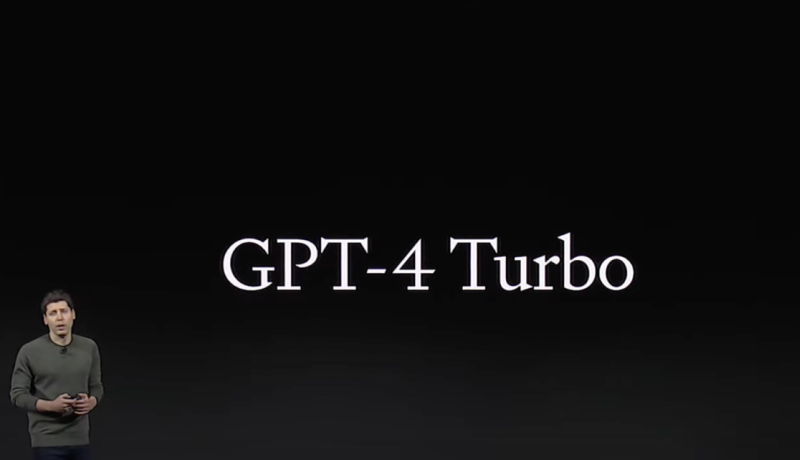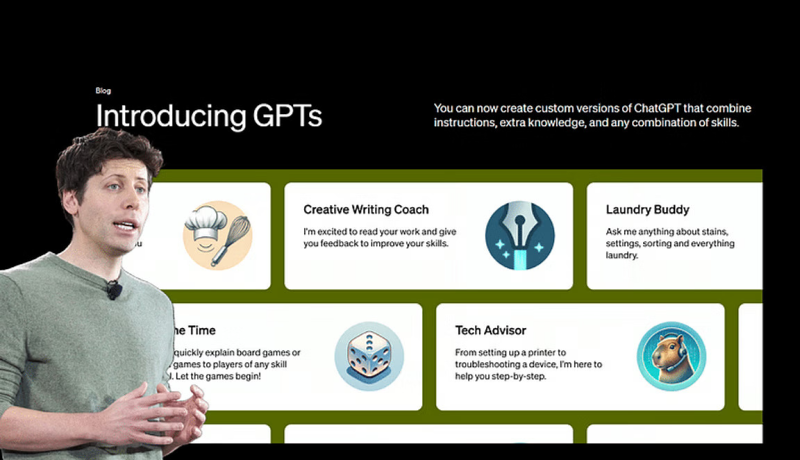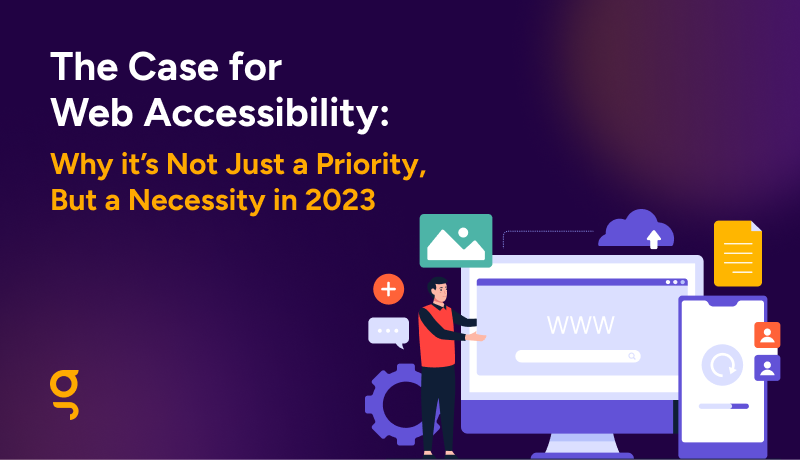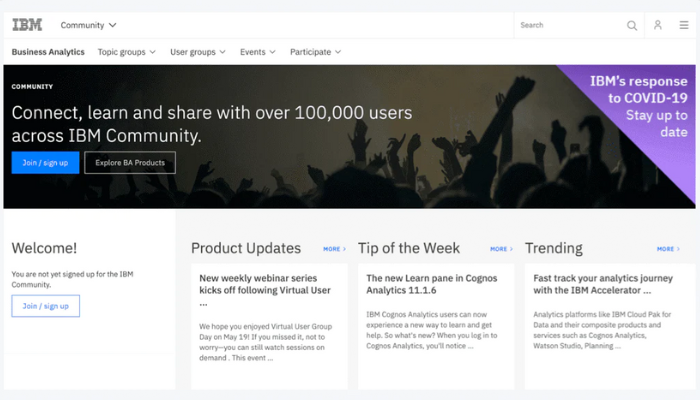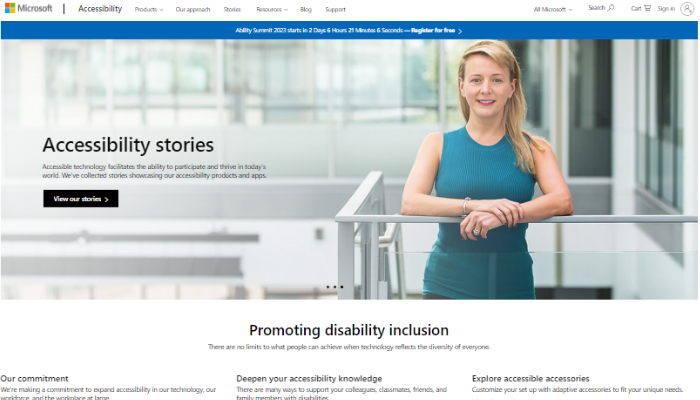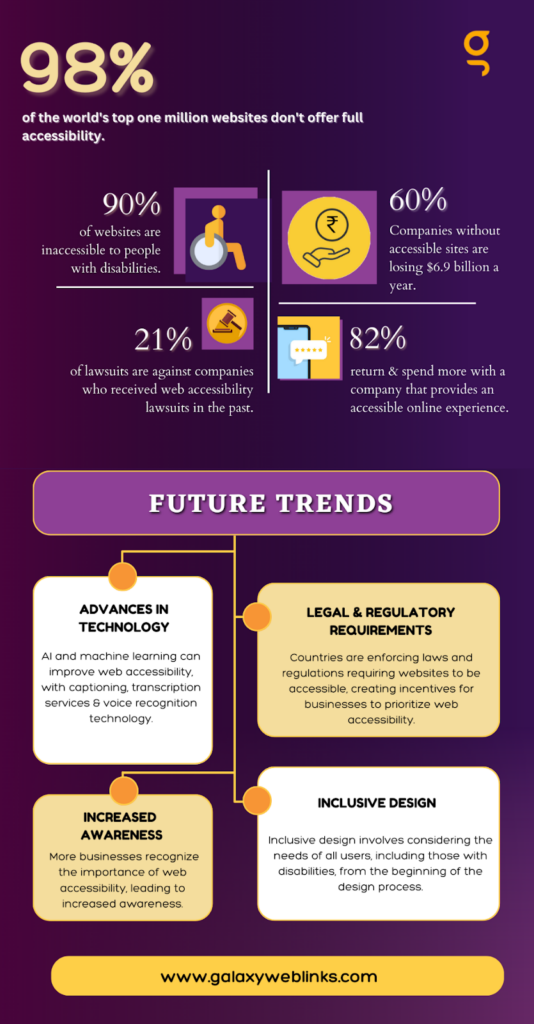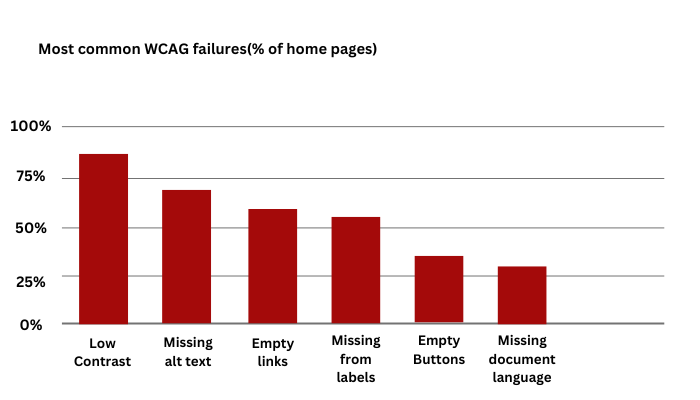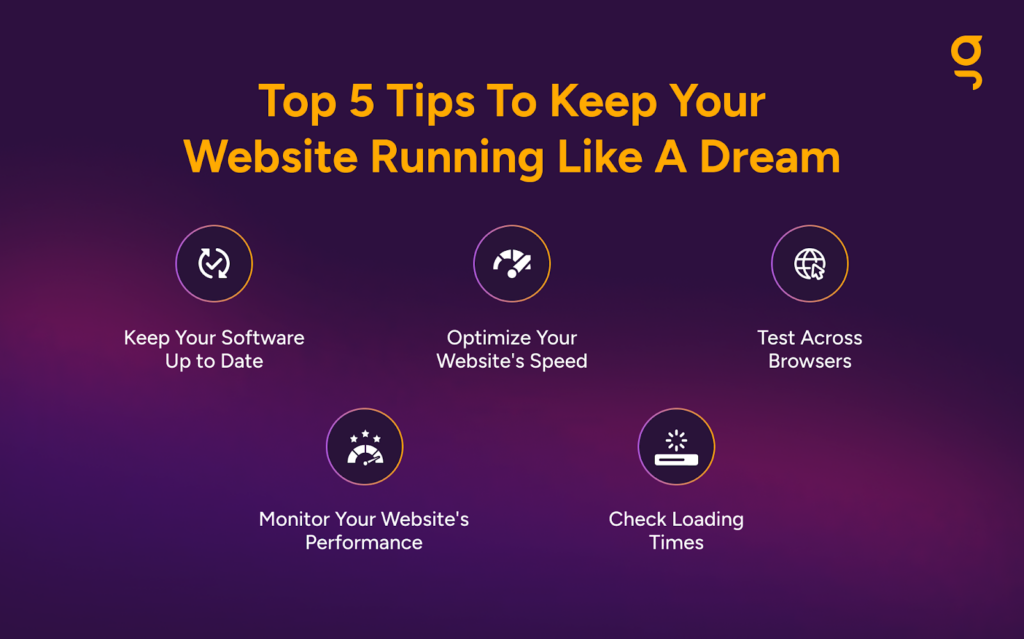The AI Accountability Wake-Up Call for SMEs
It seemed like a smart move: implementing that new AI tool to help streamline your SME’s hiring process. But then you read the headlines from just last month (April 2025) about several small businesses facing scrutiny – and even initial warnings from consumer protection bodies – for “black box” AI tools that inadvertently introduced bias, effectively filtering out qualified candidates from certain backgrounds. Over 60% of consumers, your potential customers, state they’d lose trust if an AI showed bias. This isn’t just a big business problem anymore. As AI becomes a core operational component for many SMEs by May 2025, the question of AI accountability isn’t just looming—it’s knocking on your door.
With this rapidly adopted power comes a fast-approaching and critical consideration: AI governance and compliance are becoming non-negotiable. Leading analysts like Gartner forecast that by late 2026, over 80% of enterprises deploying AI will face new regulations focusing on data handling, algorithmic bias, and operational transparency. While this prediction often highlights large enterprises, the ripple effects and foundational principles will undoubtedly impact SMEs. The question every SME owner needs to ask is: are you prepared for this new era of AI accountability?
This is where the “AI Accountability Test” comes in. It’s not a formal examination, but a crucial self-assessment of your business’s readiness to use AI responsibly, ethically, and in compliance with emerging standards. Passing this “test” means ensuring your AI practices build trust, mitigate risks, and position your business for sustainable growth. Failing it, or ignoring it, can expose your SME to significant vulnerabilities.
So, how can your SME ensure it’s on the right side of AI accountability, ready to harness its power without falling prey to its pitfalls? It starts with a clear-eyed view of the real-world implications of unchecked AI. From there, we can build a practical framework for responsible AI use. Let’s explore the common dangers first, and then walk through four straightforward pillars you can implement to use AI confidently, turning potential risks into tangible business advantages.
Understanding the Stakes: Why the “AI Accountability Test” Matters Urgently for Your SME
Before building your AI accountability framework, let’s be crystal clear about what happens if your SME isn’t prepared. In May 2025, with AI tools more accessible than ever, the allure of quick efficiency gains can sometimes overshadow critical risks. For SMEs, these aren’t distant corporate problems; they are immediate threats that can have disproportionately severe consequences due to typically tighter budgets and fewer specialist resources. Failing the “AI Accountability Test” isn’t just a theoretical concern—it’s a direct route to tangible business pain.
Here’s a sharper look at the stakes:
- The Financial Sting: Beyond Big Headlines to SME Reality You’ve seen the headlines about multi-million dollar penalties for data misuse under laws like GDPR or CCPA. While the average global data breach cost hit a staggering USD 4.45 million in 2023, even a fraction of that could be existential for an SME.
- SME Scenario: Consider your AI-powered CRM. If it inadvertently mishandles customer consent for marketing emails, or if a cloud-based AI tool suffers a breach exposing your client list, the fines are just the start. You could also face loss of crucial payment processor agreements or banking relationships, directly impacting your ability to trade. Are you truly confident about the data practices of every AI tool you’ve adopted?
- SME Scenario: Consider your AI-powered CRM. If it inadvertently mishandles customer consent for marketing emails, or if a cloud-based AI tool suffers a breach exposing your client list, the fines are just the start. You could also face loss of crucial payment processor agreements or banking relationships, directly impacting your ability to trade. Are you truly confident about the data practices of every AI tool you’ve adopted?
- Brand Betrayal: When Your AI Offends Your Customers & Community AI learns from data, and if that data (or the AI’s design) reflects societal biases, your AI can become a PR nightmare. Over 60% of consumers state they’d lose trust if an AI showed bias.
- SME Scenario: Imagine your new AI-driven scheduling tool consistently offers less favorable appointment slots to customers with names from a particular ethnic group, or a locally-focused AI ad campaign uses imagery that’s unintentionally offensive to a segment of your community. For an SME, brand trust is often built on close community ties and personal reputation. Such AI missteps don’t just cause online backlash; they can lead to a direct loss of local customers, negative word-of-mouth that’s hard to counter, and difficulty attracting local talent who see your business as unfair.
- SME Scenario: Imagine your new AI-driven scheduling tool consistently offers less favorable appointment slots to customers with names from a particular ethnic group, or a locally-focused AI ad campaign uses imagery that’s unintentionally offensive to a segment of your community. For an SME, brand trust is often built on close community ties and personal reputation. Such AI missteps don’t just cause online backlash; they can lead to a direct loss of local customers, negative word-of-mouth that’s hard to counter, and difficulty attracting local talent who see your business as unfair.
- Operational Gridlock & Losing Your Market Edge Relying on “black box” AI – systems whose internal workings are unclear – can bring your SME’s operations to a halt.
- SME Scenario: What if the third-party AI inventory management tool your e-commerce business depends on suddenly changes its API without warning, or the vendor goes bust? Or, if your AI-powered customer service chatbot starts giving consistently wrong information due to an unmonitored update, leading to a surge in support calls your small team can’t handle? Furthermore, as looming AI-specific regulations could block non-compliant businesses from key markets or from supplying larger clients, your market access could shrink if your AI practices aren’t up to par. Can you explain why your AI made a critical decision if a customer or partner asks?
These examples aren’t meant to scare you away from AI, but to underscore why proactive AI accountability is a non-negotiable for SMEs in May 2025. You likely don’t have a dedicated AI ethics board or a large legal team. This makes understanding these risks, and taking practical steps to build an accountable AI framework, even more critical for your resilience and success.
Pillar 1: Smart Data Governance – Your AI’s Trustworthy Fuel Source
For any SME in May 2025, your AI is only as good and as safe as the data it uses. Whether you’re leveraging an AI-powered CRM, an e-commerce recommendation engine, or a marketing automation tool, smart data governance is the absolute bedrock of AI accountability. It’s not about complex corporate bureaucracy; it’s about clear, “right-sized” practices ensuring you handle data responsibly, legally, and in a way that builds unshakable customer trust. Without this, even the most promising AI initiative can become a source of risk.
Why “Smart” Data Governance is a Non-Negotiable for SMEs Using AI:
- Beyond Compliance – It’s Customer Confidence: Yes, data protection laws like GDPR or CCPA equivalents carry hefty fines for misuse (the average data breach cost hit USD 4.45 million in 2023). But for an SME, the immediate impact of poor data handling for AI often comes from lost customer confidence. If your AI uses customer data in unexpected or opaque ways, that vital trust erodes fast.
- The Hidden Data Practices of “Easy AI”: Many SMEs adopt off-the-shelf AI tools that promise simplicity. However, these tools often have their own data collection and processing protocols. Smart governance means you’re not just a passive user but an active steward, understanding and validating how these third-party tools treat the data they access.
- Fueling Accurate & Fair AI: The quality, relevance, and ethical sourcing of data directly dictate your AI’s performance. “Garbage in, garbage out” is an old adage, but it’s amplified with AI. Poor data governance can lead to your AI inadvertently learning biases or making inaccurate predictions, directly impacting your business decisions and customer interactions.
Practical “Smart Data Governance” Steps for Your SME’s AI:
Implementing effective data governance doesn’t require a dedicated legal team. It’s about integrating thoughtful practices:
- Interrogate Your AI’s Data Appetite – Especially Third-Party Tools:
- Map the Data Flow: For every AI tool, especially those from vendors, ask: What specific data does it actually need to function? Where does this data come from (your customer inputs, your website, other systems)? Where is it stored, and for how long?
- Vendor Due Diligence (Simplified): Don’t just tick a box. Ask vendors pointed questions: How do they ensure compliance with data protection laws relevant to your customers? Can they provide clear documentation on their data security and privacy measures? What happens to your data if you stop using their service?
- Champion “Consent & Transparency by Design”:
- Clear Customer Communication: If your AI personalizes experiences or makes decisions based on customer data, tell your customers clearly and simply. For example, a brief, easy-to-understand note by your AI chatbot explaining it learns from interactions, or a clear statement on your e-commerce site about how AI helps suggest products.
- Purposeful Data Collection: Embrace data minimization. Only allow your AI tools to collect and use the data that is absolutely essential for the specific, declared purpose. Avoid creating vast data lakes “just in case.”
- Implement “Right-Sized” Internal Data Safeguards:
- Simple Team Guidelines: Create a basic, easy-to-follow internal checklist for handling customer data that interacts with AI. For instance: “Always verify customer consent before adding data to AI marketing tool X,” or “Delete customer query data from AI chatbot Y after 90 days unless explicitly saved for quality improvement with consent.”
- Access Control for AI Tools: Limit who on your team has administrative access to AI tools that process sensitive customer or business data. Basic password hygiene and user role management go a long long way.
- Be Ready for Customer Data Rights:
- Understand that customers have rights regarding their data (to access, to correct, to delete). Think about how you would handle such a request if the data is being processed by an AI tool. Does your AI vendor provide mechanisms for this?
Smart data governance for an SME means being conscious, questioning, and transparent. It’s about treating customer data with respect, especially when AI is involved. This pillar not only helps you meet compliance needs but also transforms data handling from a potential risk into a powerful trust-builder with your customers, solidifying your foundation for AI accountability.
Pillar 2: Keeping AI Fair – Smart Bias Checks for Your SME
As your SME increasingly relies on AI, ensuring these tools operate fairly isn’t just a “nice-to-have”; it’s a crucial part of your AI accountability that directly protects your brand and your customer relationships. The challenging part? AI bias often isn’t obvious. It can hide within the everyday AI tools you might be using for marketing, customer service, or even simple hiring aids, quietly skewing results and potentially alienating customers or missing out on great talent. For an SME in May 2025, proactive bias mitigation means being a savvy AI user, not necessarily an AI expert.
AI Bias: The SME Reality – It’s Not Just for “Big Tech”
You might think AI bias is a concern for global tech giants. But consider this:
- Your New “Smart” Email Campaign Tool: Many SMEs use AI to personalize email campaigns. What if the underlying algorithm, trained on broader internet data, subtly starts favoring language or offers that resonate more with one demographic, effectively making other customer segments feel ignored or misunderstood? This isn’t a hypothetical; it’s a common pitfall with off-the-shelf AI where the training data isn’t perfectly aligned with your specific, diverse customer base.
- The “Helpful” AI Recruitment Filter: You’re using an affordable AI tool to help screen CVs for a new role. It promises to save time. But if that tool was predominantly trained on CVs from a historically male-dominated industry, it might inadvertently downgrade highly qualified female candidates or those from non-traditional backgrounds, all without raising an obvious red flag. Research indicates that over 60% of consumers would lose trust if an AI showed bias – imagine the impact if job seekers feel your process is unfair.
- E-commerce AI: Personalized or Prejudiced?: Your online store’s AI recommendation engine is great at suggesting products. But what if it starts pushing higher-priced items primarily to customers whose data profile suggests higher income, while showing clearance items to others, even if their Browse history is similar? This could lead to perceptions of unfair treatment.
The critical point for SMEs is that you often don’t build these AI models from scratch; you use or integrate them. This means your primary leverage point for bias mitigation is in smart selection, critical usage, and ongoing observation.
Practical “Bias Check” Strategies for Savvy SMEs:
You don’t need a PhD in data science to make a difference. Here’s how to be proactive:
- Become a “Smart Shopper” for AI Tools:
- Ask Pointed Questions Before You Buy: Don’t just ask about features. Ask vendors: “How do you test for and mitigate bias in this AI tool?” “Can you share information about the diversity of the data your AI was trained on?” “Do you offer any features that allow us to monitor for potential bias in how it performs for our specific customer base?” Their answers (or lack thereof) can be very telling.
- Look for Transparency Features: Prefer AI tools that offer some level of insight into why they make certain recommendations or classifications, rather than being a complete “black box.”
- “Test Drive” with Diversity in Mind:
- Small-Scale, Diverse Data Tests: Before fully rolling out an AI tool that interacts with customers or makes important decisions (like CV screening), test it with a small, diverse set of your own data or scenarios. For example, if it’s a CV screener, run a few dummy CVs representing different backgrounds through it. Do the results make intuitive sense?
- Involve Your Team: Ask team members from different backgrounds to interact with the AI tool and share their perceptions. Do they notice anything that feels “off” or potentially unfair?
- Implement “Real-World Performance Reviews” for Your AI:
- Don’t Just Trust Vendor Claims: Once an AI tool is live, regularly “spot check” its performance against real-world outcomes. Is your AI-powered marketing tool actually engaging a diverse range of your target customers, or is it hyper-focusing? Are customer service queries from certain demographics consistently taking longer to resolve via your AI chatbot?
- Track Key Fairness Metrics (Simplified): You don’t need complex dashboards. Even simple tracking can help. For example, if an AI helps with lead scoring, are leads from certain geographic areas or industries consistently scored lower without a clear business reason?
- Create a Simple Feedback Loop:
- Make it easy for your customers and your staff to report any instances where an AI-driven interaction felt unfair, biased, or just plain wrong. This feedback is invaluable for catching issues early.
For an SME, tackling AI bias isn’t about achieving algorithmic perfection overnight. It’s about adopting a mindset of critical awareness, asking better questions of your AI vendors, and putting in place simple, practical checks and balances. This approach not only helps you meet your AI accountability obligations but also builds a more equitable and trustworthy experience for your customers and employees, which in May 2025, is a significant competitive advantage.
Pillar 3: Making Sense of Your AI – Practical Transparency for SMEs
As your SME uses AI more, you’ll inevitably hit a point where someone – a customer, an employee, or even you – asks, “Why did the AI do that?” If the answer is a shrug because the AI is a complete “black box,” you’ve got a problem. This is where practical transparency comes in as the third pillar of AI accountability. For an SME in May 2025, this isn’t about becoming an AI algorithm expert; it’s about choosing and using AI tools in a way that makes their actions generally understandable, helping you troubleshoot, build trust, and maintain control.
Why “Making Sense” of Your AI is Crucial for Your SME:
Think about these common SME frustrations where a lack of AI transparency is the culprit:
- The Mystery of the Misfiring AI Marketing Campaign: Your AI-powered ad tool just blew through its weekly budget targeting an audience segment that makes no sense for your product. If you can’t get any insight into why the AI made those choices, how do you fix it and prevent future wasted spend?
- The Frustrating AI Chatbot Loop: Customers are complaining that your new AI chatbot is unhelpful, giving irrelevant answers, or getting stuck in loops. If you don’t understand the basic logic it’s supposed to follow or where it’s going wrong, you can’t improve the customer experience, leading to lost sales and damaged reputation.
- Team Skepticism Towards AI “Magic”: You’ve invested in an AI tool to help with sales forecasting or inventory management. But if your team feels its recommendations are “plucked from thin air” with no understandable rationale, they’ll resist using it, and your investment will gather digital dust. Your newsletter mentioned maintaining human oversight over critical AI decisions, and that oversight is crippled without understandability.
Practical Steps for SMEs to Boost AI Transparency (Without Needing a Data Scientist):
- Ask “How Does It Show Its Work?” When Choosing AI Tools:
- Simple Vendor Questions: When looking at AI tools, especially for marketing, customer service, or analytics, ask vendors: “Can this tool give me a basic idea of why it made a certain recommendation or took a particular action?” “Are there any logs or dashboards that explain its behavior in simple terms?” “If it makes a mistake, how easy is it to understand what went wrong?”
- Prefer “Glass Box” Over “Black Box” (Where Possible): If you have a choice between two similar AI tools, lean towards the one that offers more built-in clarity or reporting on its operations, even if it’s not full XAI.
- Document Your Own AI “Settings” and “Why”:
- Your “Human Logic” Layer: When you configure an AI tool – setting rules for your email automation, defining customer segments for your AI CRM, choosing keywords for your AI ad optimizer – clearly document your business reasons for those settings. This human-created record is often the first and most practical layer of “explainability.”
- Regular Review: Don’t let these configurations become outdated. As your business strategy evolves, revisit them to ensure the AI is still aligned with your understandable, documented goals.
- Empower Your Team to be “AI Sense-Checkers”:
- Train for “Does This Make Business Sense?”: Encourage your team to use their human intuition and business knowledge to evaluate AI outputs. If an AI sales forecast looks wildly off compared to their on-the-ground experience, or if an AI-generated customer response sounds completely off-brand, they should feel empowered to question it and flag it.
- Simple “Show Me an Example” for Customers: If a customer questions an AI-driven interaction (e.g., “Why was I recommended this product?”), train your team to provide a simple, plausible explanation based on how the AI is supposed to work (e.g., “Our system looks at recent Browse history and popular items in that category to make suggestions”). Honesty about AI use, explained simply, builds trust.
- Prioritize Human Review for High-Impact Decisions:
- As your newsletter wisely noted, maintaining human control over critical AI decisions is key. For any AI output that directly and significantly impacts a customer (e.g., a large quote generated by AI, a denied service based on AI analysis) or your business operations, ensure a human reviews and validates it. This human “sign-off” is a practical form of accountability and explainability.
For an SME, transparency in AI isn’t about complex technical deconstructions. It’s about choosing tools that offer some clarity, applying your own business logic consistently, and empowering your team to be a common-sense check on automated decisions. This practical approach ensures your AI remains a helpful, understandable tool, not an unpredictable black box, reinforcing your overall AI accountability.
Pillar 4: Smart Human Oversight – Your SME’s Control Tower for AI
As your SME leverages AI for speed and efficiency, the final, crucial pillar of AI accountability is ensuring smart human oversight remains firmly in place. For SMEs in May 2025, this isn’t about resisting automation; it’s about strategically integrating human wisdom, ethical judgment, and contextual understanding where AI alone falls short. Without this, even well-intentioned AI can lead to costly errors or damage customer trust. The goal is to design “Human-in-the-Loop” checkpoints that are both effective and efficient for your specific business needs.
Beyond the “Automation Hype”: Why Human Judgment is Irreplaceable for SMEs
AI can process data and execute tasks at incredible speed, but it lacks genuine understanding, common sense, and the ability to navigate novel or ethically ambiguous situations. Here’s where strategic human oversight becomes an SME’s superpower:
- Preventing AI Misinterpretations Before They Escalate:
- SME Scenario: An SME uses an AI tool to automatically categorize and route customer support emails. The AI misinterprets an urgent, nuanced complaint from a high-value client as a low-priority query, leading to delayed response and client frustration.
- Smarter Oversight: Instead of letting all AI categorizations go unchecked, implement a rule where emails containing specific high-stakes keywords (e.g., “legal threat,” “contract cancellation,” “severe issue”) or those originating from your top 10% of clients are automatically flagged into a priority queue for immediate human review. This doesn’t require reading every email but strategically filters for AI’s riskiest decisions.
- Upholding Ethical Boundaries in AI-Assisted Decisions:
- SME Scenario: An e-commerce SME uses AI to personalize promotional offers. The AI, optimizing solely for conversion, inadvertently creates offer combinations that could be seen as predatory towards financially vulnerable customers or discriminatory based on inferred demographics.
- Smarter Oversight: Before launching large-scale AI-driven promotional campaigns, implement a “human spot-check” protocol. Have a team member review a diverse sample of the AI-generated personalized offers, specifically looking for any that seem ethically questionable, unfair, or off-brand. Documenting these “ethical guardrails” for AI helps maintain brand integrity.
- Ensuring Customer Trust When AI Interacts Directly:
- SME Scenario: An SME uses an AI chatbot for initial customer interaction. The chatbot provides incorrect information or gets stuck in a frustrating loop.
- Smarter Oversight: Design your AI chatbot with very clear and easy-to-find “escalate to human” options available at every stage of the conversation. Program the AI to detect signs of user frustration (e.g., repeated identical questions, negative keywords, capslock typing) and proactively offer to connect to a human agent, ensuring a seamless handover of the conversation context to the human.
Practical Steps for Implementing Smart Human Oversight in Your SME:
Integrating human oversight efficiently means:
- Mapping Critical AI Decision Points:
- Review all AI tools and identify exactly where they make decisions with significant customer or business impact (e.g., final pricing, access to services, personalized medical/financial information if applicable, major stock reordering). These are your non-negotiable points for potential human review.
- Designing “Exception-Based” Review Workflows:
- Don’t aim to review every AI action. Configure AI systems to flag only exceptions or high-risk decisions for human approval. For instance, an AI that drafts client proposals might require human sign-off only if the proposal value exceeds a certain threshold or if it includes non-standard terms. This balances efficiency with control.
- Empowering Your Team with Clear Override and Escalation Protocols:
- Ensure staff can easily override an AI decision if they detect an error or believe a different approach is better. They shouldn’t feel “stuck” with a bad AI output.
- Have a simple, documented process for escalating complex AI issues or repeated errors to a designated person or small team within your SME.
- Conducting “AI Performance Huddles” Regularly:
- Once a month, have a brief meeting with key team members who interact with your AI tools. Discuss: What’s working well? What’s causing frustration? Were there any “near misses” where AI almost made a big mistake? This qualitative feedback is invaluable for refining oversight processes.
For SMEs, smart human oversight means AI works for you, amplifying your team’s capabilities while your human expertise guides the critical decisions. It’s about making AI a trusted partner, not an unpredictable black box, ensuring you pass the “AI Accountability Test” with confidence.
Worried About AI Accountability? Here’s How Galaxy Weblinks Makes it Achievable & Advantageous for Your SME
You’ve seen the stakes. You understand the pillars of AI accountability. But the big question for many SME owners in May 2025 is: “How do I realistically implement this without a dedicated AI ethics team or a massive budget, and still focus on growing my business?”
This is where many SMEs get stuck. They might:
- Try a DIY Approach: Get bogged down in complex regulations and technical jargon, leading to partial solutions or complete overwhelm.
- Hire Generalist Consultants: Who might understand business but lack deep, specialized knowledge in the practicalities of AI governance and trust for your scale.
- Use Off-the-Shelf AI Blindly: Hope for the best, exposing themselves to the risks we’ve discussed.
Galaxy Weblinks offers a smarter, more effective path. We’re not just another IT services company; we are specialists in making AI trust and accountability practical, efficient, and a genuine competitive advantage for SMEs. Our proprietary “AI Trust Accelerator Framework” isn’t about generic advice; it’s about targeted, real-world solutions designed for your business reality.
Here’s How We Help Your SME Differently:
- Your Problem: “AI compliance feels too complex and time-consuming for my SME.”
- Our Solution: We don’t drown you in regulatory documents. Our “Rapid Blueprint for Compliance” process is designed for speed and clarity. We quickly assess your specific AI tools and use cases against the key emerging standards (whether you’re eyeing US markets, Middle Eastern expansion, or need to align with GDPR/CCPA principles). You get an actionable, prioritized roadmap, not a 100-page academic report. This means you know exactly where to focus your efforts for maximum impact, saving you countless hours of guesswork.
- Our Solution: We don’t drown you in regulatory documents. Our “Rapid Blueprint for Compliance” process is designed for speed and clarity. We quickly assess your specific AI tools and use cases against the key emerging standards (whether you’re eyeing US markets, Middle Eastern expansion, or need to align with GDPR/CCPA principles). You get an actionable, prioritized roadmap, not a 100-page academic report. This means you know exactly where to focus your efforts for maximum impact, saving you countless hours of guesswork.
- Your Problem: “Implementing technical AI safeguards seems too technical or expensive.”
- Our Solution: Our “Targeted Tech Implementation” is surgical. We don’t advocate for overhauling your systems. Instead, we identify the most critical points where safeguards like auditable data flows, practical explainability features for the AI you use, smart bias mitigation checkpoints, and efficient “Human-in-the-Loop” controls will provide the biggest risk reduction and trust enhancement. We focus on pragmatic integrations that fit your existing tech stack and budget, making robust governance achievable.
- Our Solution: Our “Targeted Tech Implementation” is surgical. We don’t advocate for overhauling your systems. Instead, we identify the most critical points where safeguards like auditable data flows, practical explainability features for the AI you use, smart bias mitigation checkpoints, and efficient “Human-in-the-Loop” controls will provide the biggest risk reduction and trust enhancement. We focus on pragmatic integrations that fit your existing tech stack and budget, making robust governance achievable.
- Your Problem: “How do I know if this AI accountability stuff will actually benefit my bottom line, beyond just avoiding trouble?”
- Our Solution: We help turn compliance from a cost center into a demonstrable business advantage. For example, we recently partnered with a mid-market e-commerce SME concerned about their new AI recommendation engine’s compliance and trustworthiness. Using our “AI Trust Accelerator Framework,” we helped them achieve AI compliance readiness an estimated 30% faster, ensuring CCPA alignment and auditable decision logs. Critically, beyond just compliance, they saw a 15% uplift in conversions because their customers found the AI-driven recommendations more relevant and trustworthy. This is the tangible ROI of well-implemented AI accountability – better performance and peace of mind.
Galaxy Weblinks’ Core Advantage for Your SME:
- We Understand SMEs: We’re not pushing enterprise-level complexity onto your business. Our framework and approach are built for your scale, your pace, and your resources.
- Specialized Expertise, Made Accessible: We bring deep knowledge of AI trust, ethics, and even cross-cultural UX (vital if you serve diverse customers or eye international markets) and translate it into practical, actionable steps.
- Focus on Efficiency & Results: Like you, we value efficiency. Our goal is to get your SME AI-accountable and trust-ready faster and more effectively than you could on your own or with a non-specialist partner.
Stop worrying about the “AI Accountability Test” and start leveraging AI with confidence. Galaxy Weblinks provides the specialized partnership to make that a reality for your SME.
Take the SME AI Accountability Challenge: Score Your Readiness Today!
Understanding AI accountability is vital, but action is what transforms risk into readiness. For SMEs in May 2025, here’s a practical “AI Accountability Challenge” with specific, implementable steps. For each action you’ve already fully completed, give your business 1 point. If not, consider it a priority action item. Let’s see how prepared you are!
(Your AI Accountability Score: __ / 5 )
- Action: Inventory & “Mini-Risk Assess” Your Top 3 AI Tools (This Week)
- How to Implement:
- Identify the top 3 AI-powered tools or software critical to your SME’s daily operations (e.g., your CRM’s AI features, your primary marketing automation tool, your customer service chatbot).
- For EACH of these 3 tools, create a simple document and answer these specific questions:
- Data Input: What exact customer or business data does this tool access/require? (List the specific data fields if known).
- Data Output/Decisions: What key decisions or outputs does this AI generate? (e.g., customer segments, email content, support answers, sales forecasts).
- Biggest “Oops” Potential: What’s the single biggest negative thing that could happen if this AI tool made a significant error or misused data? (e.g., “Send wrong offer to all customers,” “Chatbot gives harmful advice,” “Misclassify all new leads”).
- Why it’s Actionable: This isn’t a full audit, but a focused check on your most impactful AI, forcing you to confront specific data usage and potential failures.
- (Score 1 point if you’ve fully done this for your top 3 AI tools in the last 3 months)
- How to Implement:
- Action: Designate & Announce Your “AI Oversight Champion” (By End of Next Week)
- How to Implement:
- Choose one person on your team (even if it’s you, the owner) who will be the designated point of contact for AI-related concerns and responsible for staying generally informed (they don’t need to be a tech expert).
- Send a brief internal email or make an announcement in your next team meeting: “To ensure we use AI tools responsibly, [Name] will be our AI Oversight Champion. If you have questions or spot any issues with our AI tools, please discuss them with [Name].”
- Schedule a 30-minute chat with this Champion within the next month to discuss their role (primarily to encourage mindful AI use and flag concerns).
- Why it’s Actionable: This creates immediate, visible internal accountability with minimal effort.
- (Score 1 point if you have a designated, announced AI Oversight Champion)
- How to Implement:
- Action: Add a Simple “AI Usage Transparency Snippet” to Your Website/App (Within 2 Weeks)
- How to Implement:
- Identify where your customers most directly interact with AI (e.g., your website chatbot, personalized product recommendations on your e-commerce site, AI-assisted booking forms).
- Add a concise, easy-to-understand sentence at that point of interaction. Examples:
- Chatbot: “Hi! I’m [Your Company]’s AI assistant. I can help with X, Y, Z. If you need a human, just type ‘speak to agent’.”
- Product Recommendations: “Psst! Our smart system suggests products you might like based on your Browse and what’s popular. Learn more in our Privacy Policy.”
- Review your Privacy Policy and add one or two sentences explicitly stating if/how AI is used with customer data in simple terms.
- Why it’s Actionable: This directly addresses transparency with minimal technical changes and boosts customer trust.
- (Score 1 point if you have clear, simple AI usage snippets at key customer interaction points AND in your Privacy Policy)
- How to Implement:
- Action: Conduct One “AI Tool Spot-Check & Override Drill” with Your Team (This Month)
- How to Implement:
- Pick one AI tool your team uses regularly (e.g., an AI for drafting email responses, an AI for scheduling, an AI for generating social media captions).
- In a team meeting, present a scenario where the AI produces a slightly “off” or clearly incorrect output relevant to that tool.
- Ask your team:
- “What looks wrong or risky about this AI output?”
- “What’s our process for not using this output?” (i.e., how do they override or ignore it?)
- “Who should be informed if the AI consistently makes this kind of error?”
- Document the agreed-upon override/escalation process, however simple.
- Why it’s Actionable: This actively tests and reinforces your human oversight capabilities and empowers your team.
- (Score 1 point if you’ve conducted such a drill for at least one AI tool in the last 3 months)
- How to Implement:
- Action: Schedule Your No-Obligation “AI Accountability Check-up” (Today)
- How to Implement:
- Recognize that expert guidance can fast-track your AI accountability and de-risk your AI initiatives.
- Take the proactive step to get a specialized perspective on your SME’s specific situation by booking your Complimentary 30-Minute AI Accountability Check-up with Galaxy Weblinks.
- During this focused session, you can discuss your top AI project, get an answer to a pressing compliance question, and receive an immediate, practical insight to improve your AI governance.
- Why it’s Actionable: It’s a concrete step to gain expert advice tailored to your business with no cost or obligation, directly addressing any uncertainties you might have after your initial self-assessment.
- (Score 1 point if you have scheduled or completed such a check-up/consultation with an AI governance expert recently)
- How to Implement:
What’s Your Score? A lower score doesn’t mean failure; it means you have a clear, actionable path to significantly improve your SME’s AI accountability starting now. A higher score means you’re well on your way – keep up the great work and continue refining!
Turn AI Accountability from Risk to Your SME’s Advantage
For SMEs in May 2025, AI is a powerful engine for growth, but true success hinges on responsible use. Passing the “AI Accountability Test” isn’t just about avoiding pitfalls like fines or brand damage; it’s about proactively building a resilient, trustworthy business.
By implementing Smart Data Governance, Fair Bias Checks, Practical Transparency, and Smart Human Oversight, your SME can confidently navigate the AI landscape. The “AI Accountability Challenge” in the previous section gives you a starting point to assess your readiness.
This journey is about transforming AI accountability into a competitive edge, fostering deeper customer loyalty, and innovating safely. Building trust in AI is indeed key.
Ready to ensure your SME is AI-accountable and future-ready?
- Take the Definitive Next Step: Galaxy Weblinks invites your SME to a Complimentary 30-Minute AI Accountability Check-up. Get expert, practical insights on your top AI initiative and key compliance questions.
Book Your Free AI Accountability Check-up Now- Connect and Continue the Conversation: I regularly discuss practical AI adoption and governance on LinkedIn. Let’s connect!
Let Galaxy Weblinks help your SME lead with responsible and effective AI.
